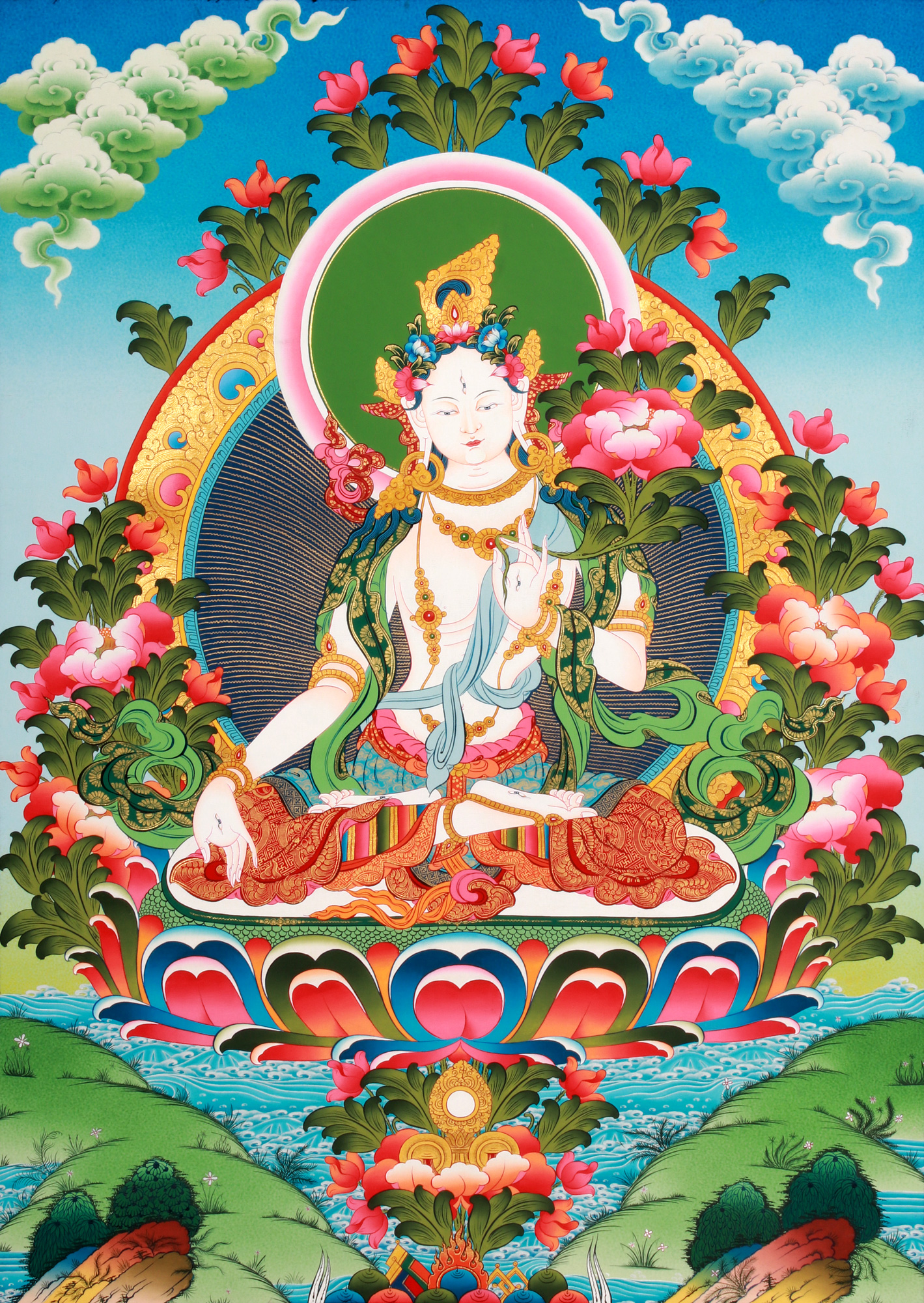
Superfine Tibetan Buddhist Goddess White Tara The AllEmbracing Compassionate Vision
Iconographically, She can appear in any color. Famously, She is Green Tara, the savioress—and chief manifestation of Tara. She is equally known as White Tara, the Goddess of Long Life and Healing. The 21 forms of Tara (according to Atisha in this Tangkha) are only the beginning of the endless emanations and depictions of Tara.

Goddess Tara God Pictures
Long Life Tibetans pray to White Tara especially for health, healing and longevity. She offers healing to our wounds, whether it is our bodies or our minds that have been hurt. The White Tara Long Life Initiation (Dolkar Tsewang) is very popular among Tibetans.
:max_bytes(150000):strip_icc()/dreamstime_m_22003666-58b5a36a5f9b58604691a968.jpg)
Tara Goddess and Archetype of Compassion
Tara is most commonly regarded to be a goddess of compassion, and her two most common forms are the Green Tara and White Tara. Nevertheless, this bodhisattva also exists in various other forms - on Tibetan temple banners, as many as 21 Taras may be depicted, each form having its own symbolism. White Tara statue in Kathmandu Nepal.
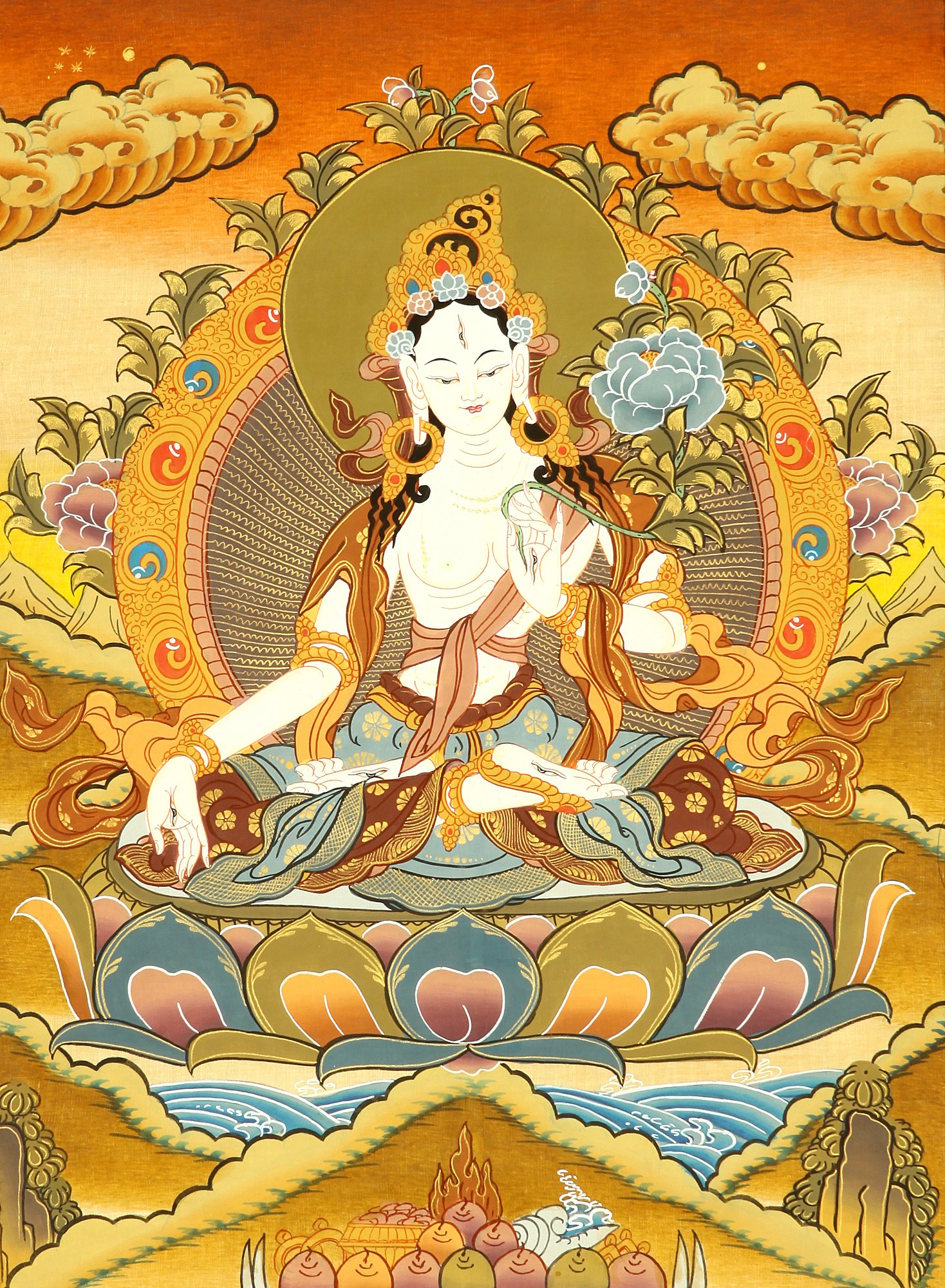
Goddess White Tara
Tara is undoubtedly the most powerful female deity in the Buddhist pantheon. Her name means "star" in Sanskrit and she is believed to possess the ability to guide followers, like a star, on their spiritual path.
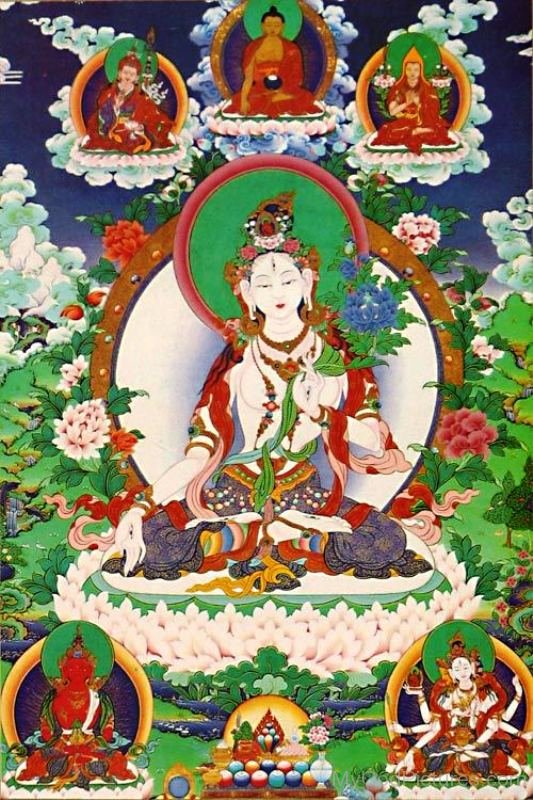
Goddess White Tara Picture God Pictures
Standard Tibetan སྒྲོལ་མĀrya Tārā, or śyāmatārā, also known as Jetsün Dölma (Tibetan: rje btsun sgrol ma ), is an important figure in Buddhism, especially revered in Vajrayana Buddhism Mahayana Buddhism. She appears as a female bodhisattva in Buddhism, and as a female Buddha in Vajrayana Buddhism.
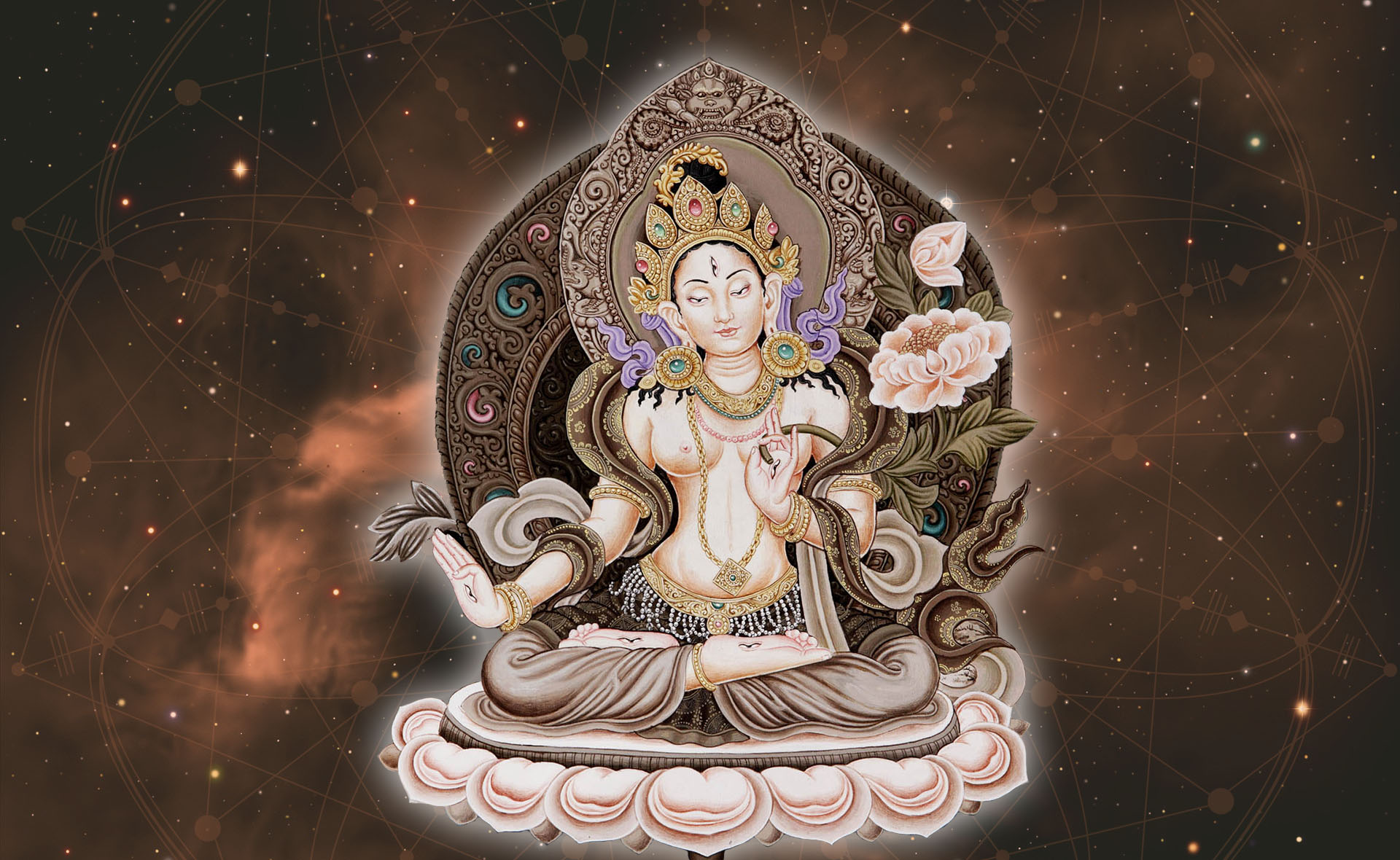
White Tara Mantra for Receiving the Gift Of Longevity and Health SOLANCHA
Sita Tara (White Tara Goddess): An In-Depth Exploration of the Feminine Divine in Tibetan Buddhism Beyond Enlightenment: Sita Tara's Cosmic Wisdom in Buddhism

Goddess White Tara Exotic India Art
Tara is a female deity in both Hinduism and Buddhism who personifies compassion and offers salvation from the suffering of rebirth and death. She is thought to have been born of empathy for the suffering world and is regularly invoked for protection, guidance, and deliverance from difficult situations.

Tibetan Buddhist White Tara Goddess of Long Life
The white Tara's are for healing, pacifying or long life, as they pacify the obstacles and negative karmas that cause illness.. (Note: Before you think of (incorrectly) Tara as a "love goddess," remember she is an Enlightened Being and her magnetizing activity can only be focused on positive karma activities — not selfish love.
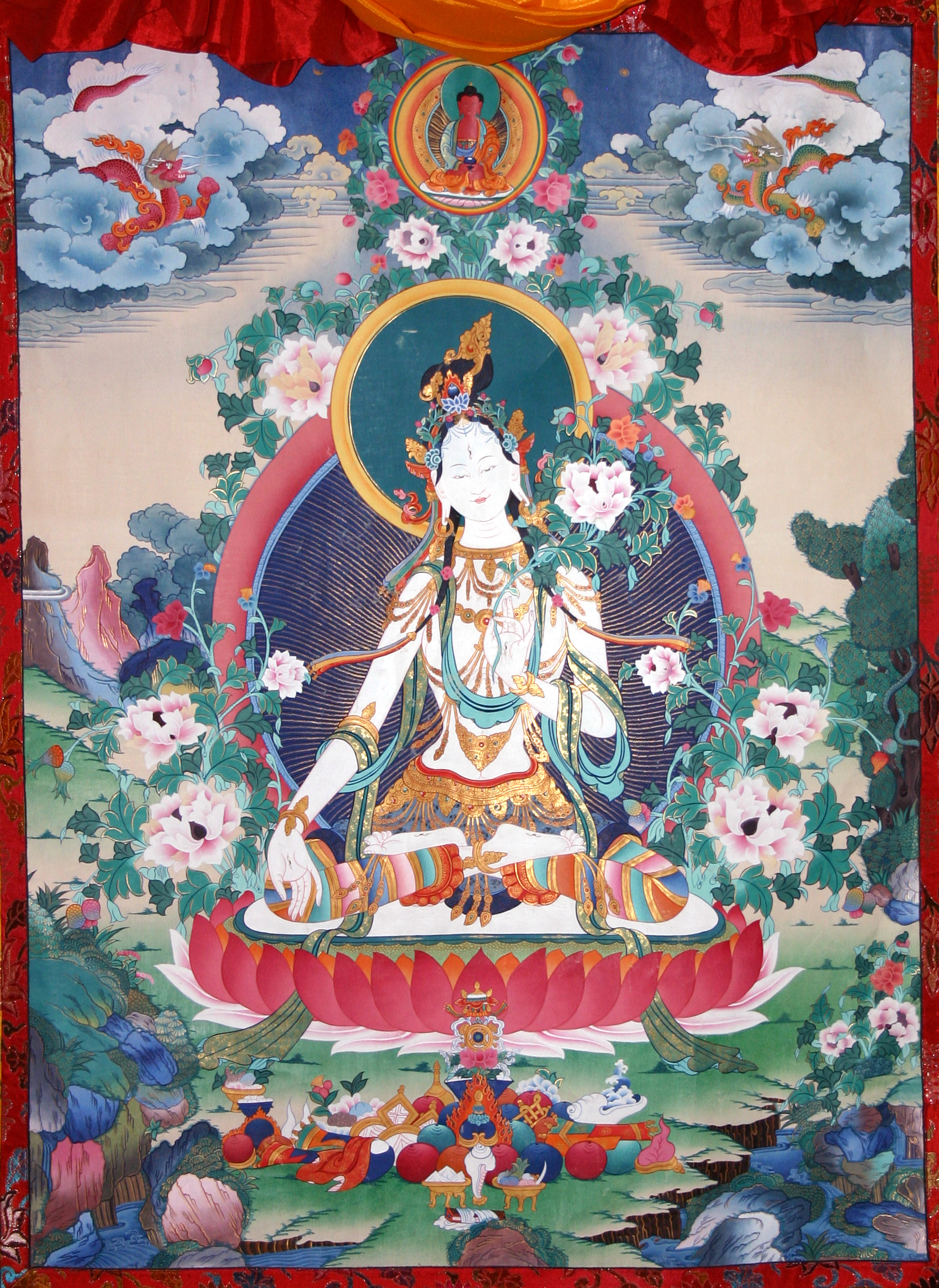
Buryat worship of the Russian Czar as White Tara Goddess Historum History Forums
White Tara, known as Sita Tara in Sanskrit, is worshipped as the mother of all Buddhas and an embodiment of the maternal aspect of compassion. Her white color is a symbol of purity, the immaculate truth of the Dharma and perfectly pure wisdom.
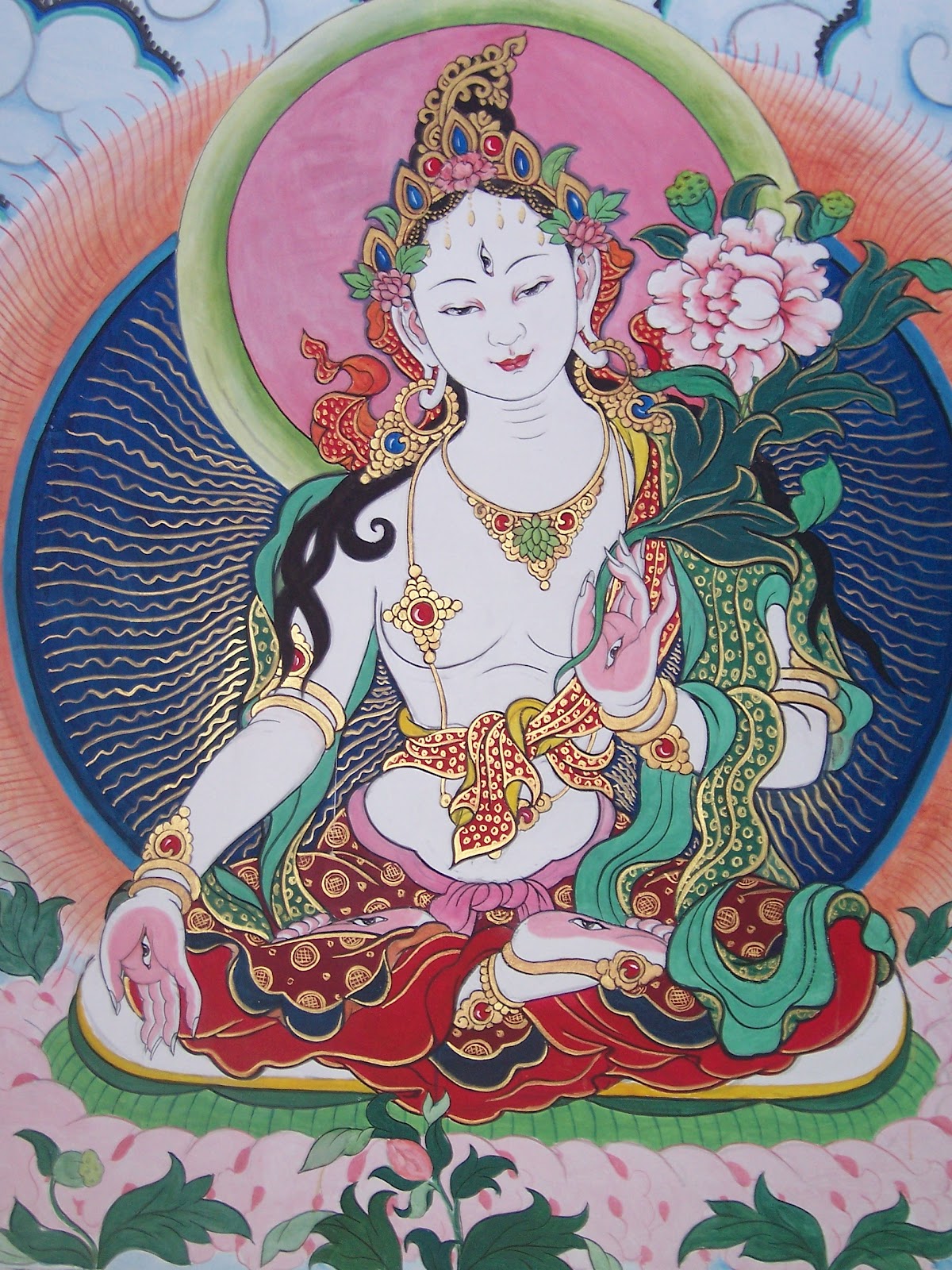
Life Of Lopsided 8 White Tara, the Mother of Longevity
White Tara (Sitatara) is associated with long life. Her mantra is often chanted with a particular person in mind. She's another representation of compassion, and she's pictured as being endowed with seven eyes (look at the palms of the hands, soles of the feet, and her forehead) to symbolize the watchfulness of the compassionate mind.

White Tara by Cyzra on DeviantArt
Hindu goddess Kali and Tara are similar in appearance. They both are described as standing upon a supine corpse sometimes identified with Shiva. However, while Kali is described as black, Tara is described as blue.

White Tara Buddhist art, Buddha art, Buddhism art
In a variation of the original legend, White Tara was born from the tears from Chenrezig's left eye, and Green Tara was born from the tears of his right eye. In many ways, these two Taras complement each other. Green Tara often is depicted with a half-open lotus, representing night. White Tara holds a fully blooming lotus, representing the day.
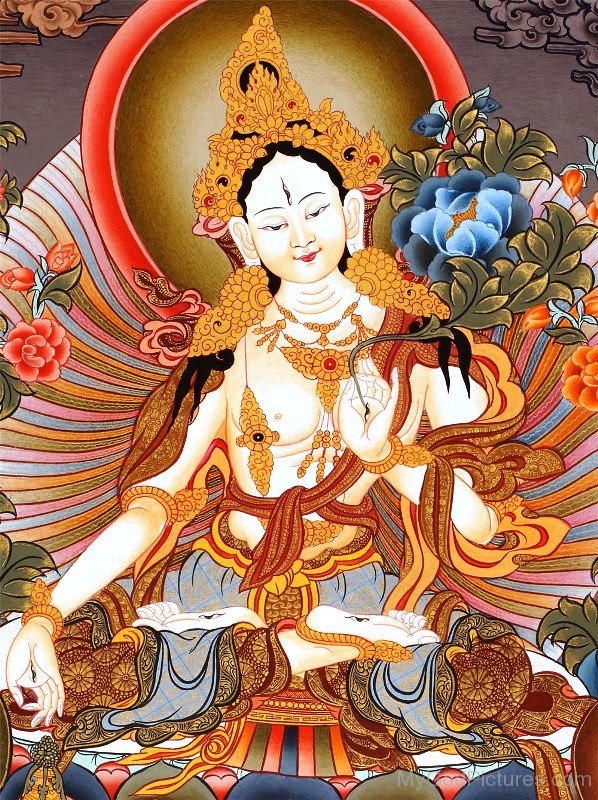
Goddess Of Long Life White Tara
The Eastern Tradition of KUAN YIN. & The Tibetan Goddess TARA. In both Taoism and Buddhism Kuan Yin is the goddess of compassion, she is the Japanese Bodhisattva Kannon or Kanzeon, and is identified with the Indian Bodhisattva Avalokitesvara, including all of the scriptures which apply to him. Kuan (Shih) Yin means "the one who hears the cries.
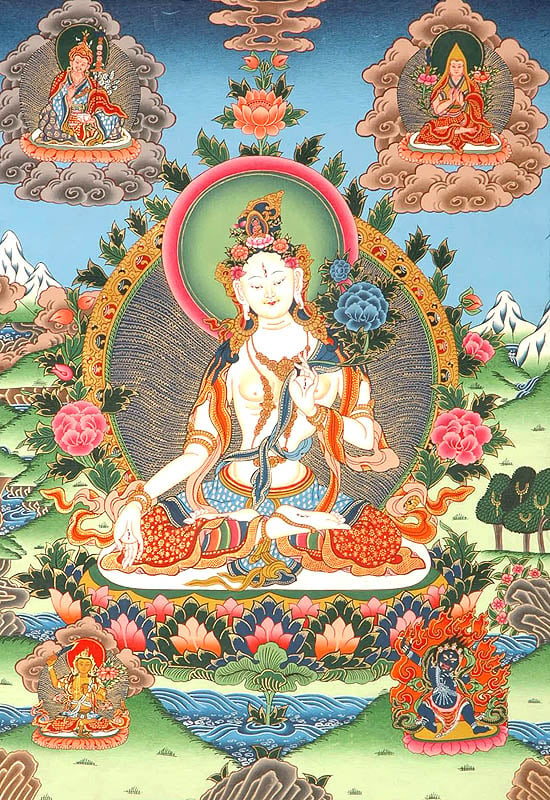
White Tara Goddess of Long Life Exotic India Art
Sitatapatra, a form of White Tara from Sutra, a protective supreme form who emerged from Shakyamuni Buddha's Ushnisha and is known to be most most protective of Enlightened Deities.. She can be as simple as a beautiful white goddess bearing a protective parasol umbrella, or as ferocious as a towering deity with 1,000 heads, 1,000 arms, and.
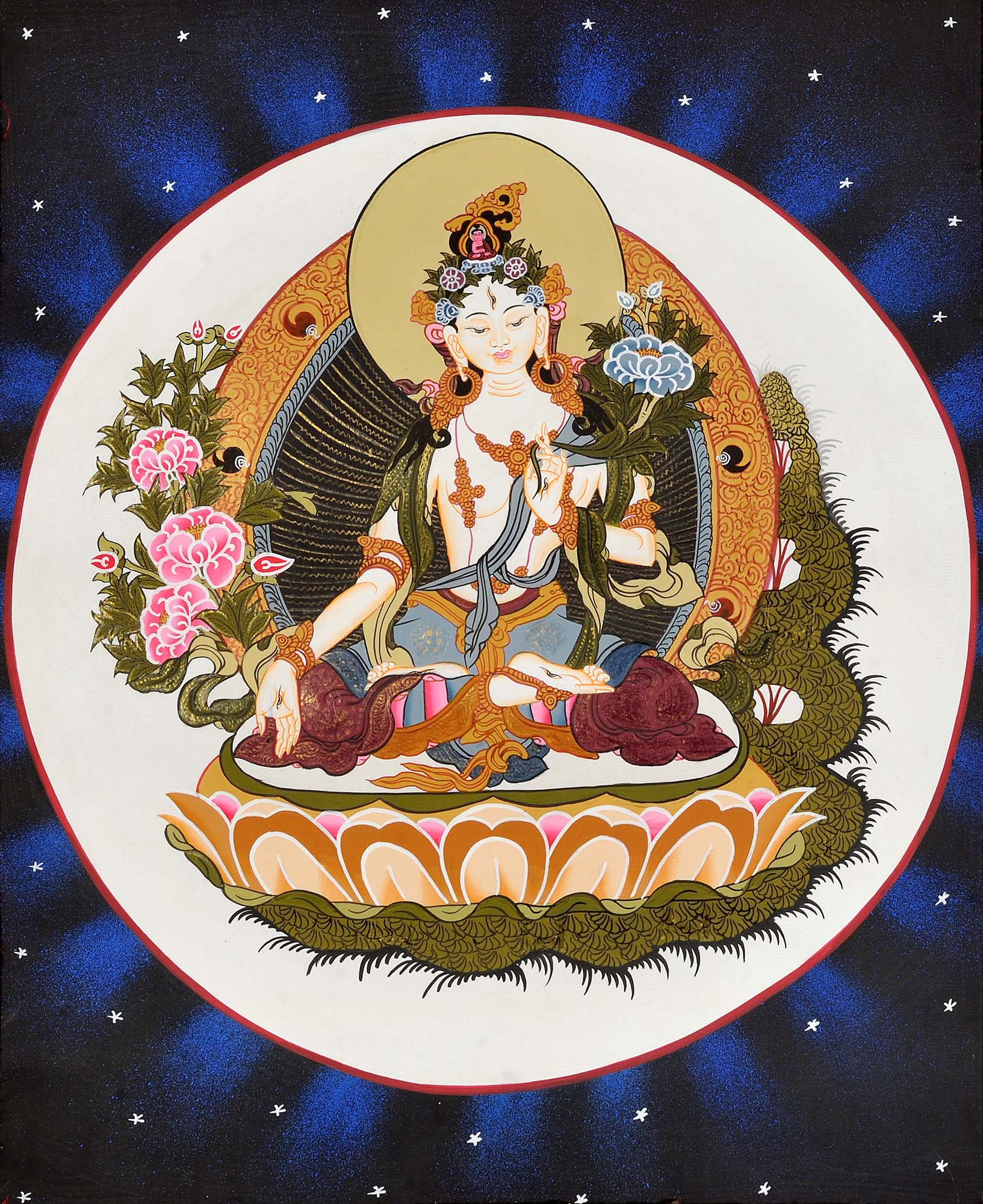
Tibetan Buddhist Goddess White Tara
The White Tara (Sanskrit: Sitatara; Tibetan: Sgrol-dkar) was incarnated as the Chinese princess. She symbolizes purity and is often represented standing at the right hand of her consort, Avalokiteshvara, or seated with legs crossed, holding a full-blown lotus. She is generally shown with a third eye.… Read More
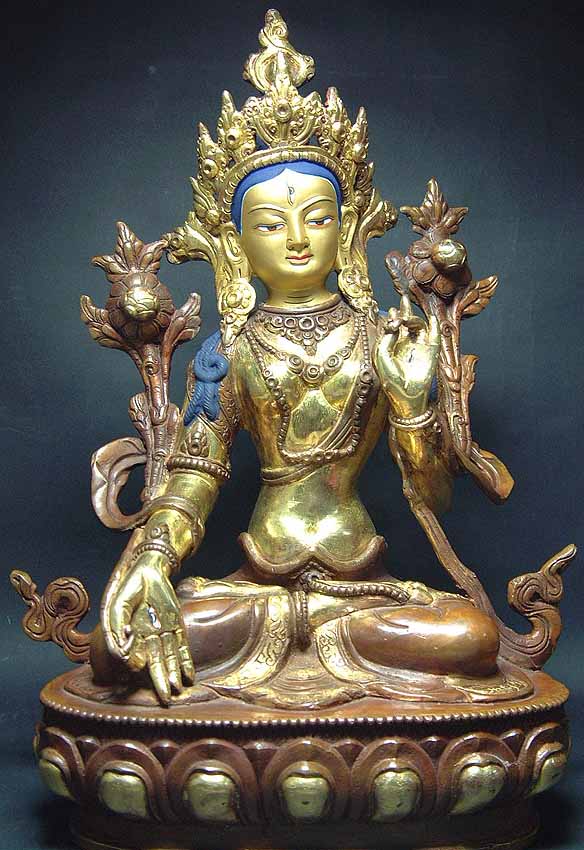
The Goddess White Tara Exotic India Art
She is associated with bestowing long life, so she is called the Goddess of Long Life. White Tara is specialized in dispelling from untimely death. She is the principal Yidam of many great masters, including Mahi Siddhi Nagi Wangchuck, Nargajuna and other great Siddhi's. In Tibet, many great masters practice White Tara to dispel obstacles.